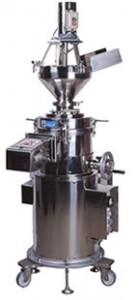Cellulose is the most abundant polymer on the earth but it is not fully utilized. Cellulose exists in the form of microfibrils containing both crystalline regions and amorphous regions. The microfibrils are highly packed in the fiber cell wall. To utilize intact cellulose microfibrils, the layered structure of fiber cell wall needs to be destroyed, liberating the microfibrils. Development of a method to economically destroy the cell wall structure and liberate microfibrils is the key requirement needed to unlock the potential benefits offered by the unique properties of cellulose microfibrils.
Recently, microfibrillated cellulose (MFC) has attracted a great deal of attention as possible reinforcement material for nanocomposites. Microfibrillated cellulose is produced by mechanically fibrillating cellulosic fibers until the layered cell wall structure is destroyed. The cellulose fibers break into small masses of fibrils or, in extreme cases, they break down to individual cellulose microfibrils. MFC offers unique possibilities due to its minute size, high crystallinity, high stiffness and noteworthy mechanical strength as well as its combination of substantial surface area and hish concentration of available surface hydroxyl groups.
Since the invention of the initial MFC production process, several new MFC production methods have been proposed.
 One of the best method is a ultra-fine friction grinder “Supermasscolloider” manufactured by Masuko Sangyo Co., Ltd headquartered in Japan. This ultra-fine friction grinder destroys fiber wall structure very efficiently to liberate cellulose microfibrils. The grinder-produced-MFC contains less unfibrillated fiber fragments than homogenizer-produced-MFC.
One of the best method is a ultra-fine friction grinder “Supermasscolloider” manufactured by Masuko Sangyo Co., Ltd headquartered in Japan. This ultra-fine friction grinder destroys fiber wall structure very efficiently to liberate cellulose microfibrils. The grinder-produced-MFC contains less unfibrillated fiber fragments than homogenizer-produced-MFC.
To learn more about this ultra-fine friction grinder, please call our specialist.
Contact Number: 404-550-2573, E-mail Address: hnanko@iti-america.com

